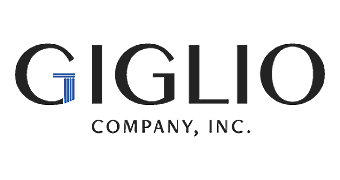Change the Person, Not the Job
 Filling open positions on your team usually boils down to this: find the right person for the job. But what about the people already ON your team. Do they meet this basic qualification? Perhaps they did at first, but the job has changed. How well do they match up now?
Filling open positions on your team usually boils down to this: find the right person for the job. But what about the people already ON your team. Do they meet this basic qualification? Perhaps they did at first, but the job has changed. How well do they match up now?
Too many times I see leadership change a job’s requirements to match the skills of the person doing the work. So I ask, how can you expect to achieve the team/company goals in that situation?
What Do They Think the Job Is?
As you study the business landscape, it’s essential to notice what each direct report believes their job to be. Contrast that with what you know the job needs to be NOW. Often direct reports believe they are doing what needs to be done but are basing it on old information. Is it their job to anticipate what the new requirements are? Perhaps but, how can you be sure they make that leap correctly? That’s your responsibility.
The closer my clients look into the business behaviors their direct reports/leaders need, the more they discover that many of them have been operating at a sub-par level to the vision and direction they want their organization heading. A new job description is needed.
Let Them Know What You Know
You’re the leader. What this presumes is that you understand what needs to occur to bring the organization to a level of prosperity that your board has deemed desirable. You are more aware than your team is about how the company’s goals have changed due to market conditions, customer needs, the competitive landscape and product/service development. Make your team aware of it, too. That way, you will know they are attacking their work like green berets, armed with intelligence that allows them to adapt.
But what happens if someone doesn’t, or can’t, adapt?
Changing the Job Can Require Someone New
Many times I coach leaders who have a direct who isn’t “getting with the program.” However, instead of doing something about the person, they simply adapt the job around that person’s skill level, thereby diluting the effectiveness of the whole team.
As an example, you may have a COO whom you’ve noticed is reticent to engage and cannot ask tough questions of others while remaining objective. You need this done, otherwise it falls to you. Do you have time to do your job and his?
This skill is now a requirement of the job. A strong leader will detail what is expected to the direct and create a development plan that gives him/her the chance to succeed. However, you must create a timeline that establishes a deadline beyond which you are not willing to accept sub-par performance in this area. And, you must be ready and willing to replace that direct with someone who possess the skills needed for the new job description.
In other words, a new job description may require a new person to fill the position. Right person for the job!
Successful completion of the development plan or the hiring of someone who has the sought-after skills accomplishes three important goals:
- Ensuring that a position’s required skills are aligned with the experience each direct has.
- Demonstrating a commitment to current employees if they are willing to adapt and learn.
- Consistent adapting of your team’s objectives so that they always map back to the company’s goals.
The more you pinpoint the essential behaviors of your directs and coach them to develop these skills, the quicker and easier it will be to lead your organization. Directs will also be grateful that you’ve taken the time to study them, contribute to their success and raise their development bar. They will also know that the new expectations of the position require developing new skills. If they can’t/won’t develop those skills, the job will not be adapted to their skill level.
When was the last time you redeveloped your directs’ job descriptions? Do you have the right people in the right positions? Post a comment below to tell me about it.

 The person who said “change doesn’t happen overnight” had not met Steve Giglio. Steve accelerates the change you want by quickly influencing the behaviors of your executives. Then he anchors the longevity of that change by remaining engaged with the executive, tracking progress and providing direct counseling during challenges.
The person who said “change doesn’t happen overnight” had not met Steve Giglio. Steve accelerates the change you want by quickly influencing the behaviors of your executives. Then he anchors the longevity of that change by remaining engaged with the executive, tracking progress and providing direct counseling during challenges.